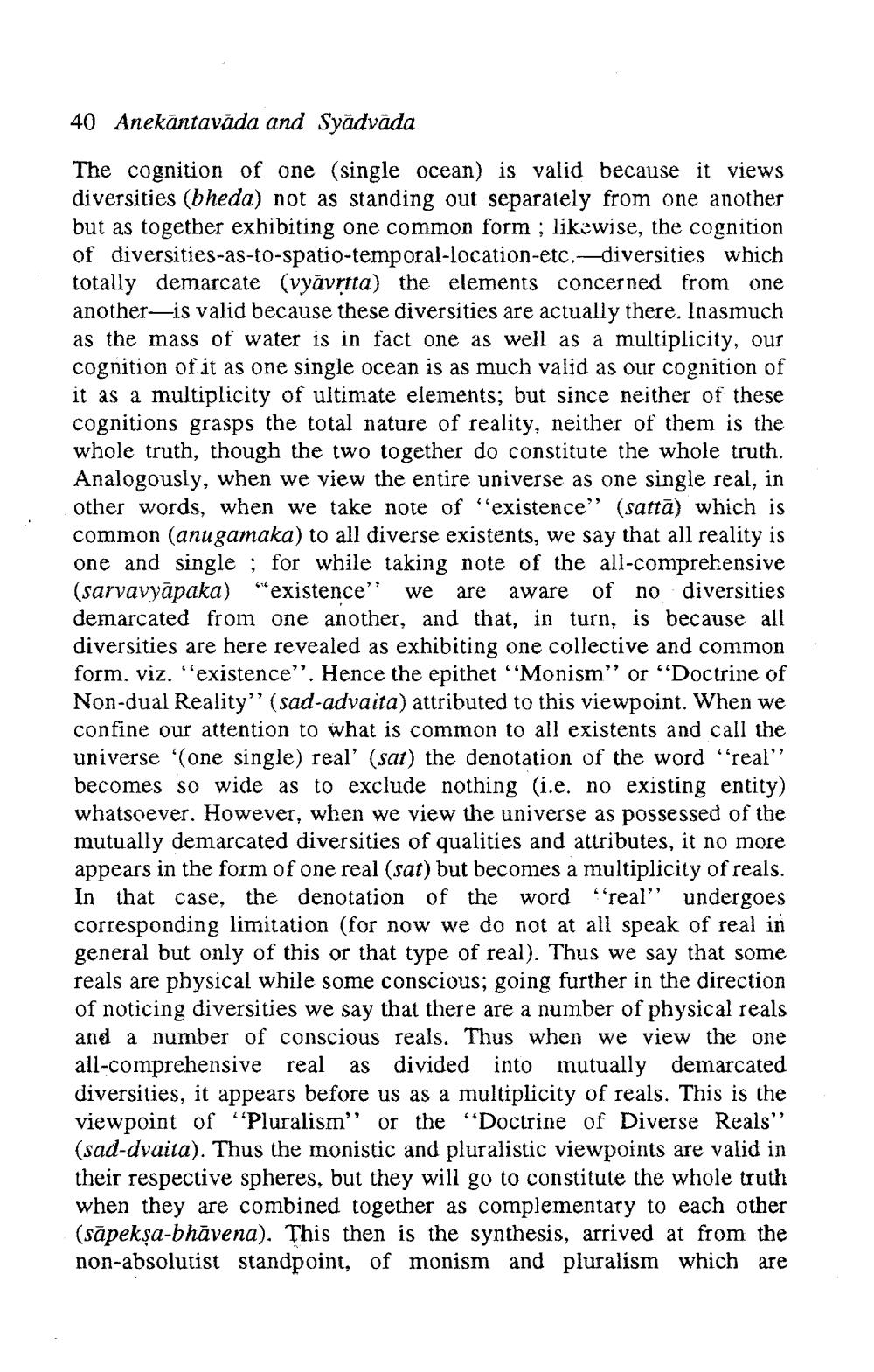________________
40 Anekāntavāda and Syādvāda
The cognition of one (single ocean) is valid because it views diversities (bheda) not as standing out separately from one another but as together exhibiting one common form ; likewise, the cognition of diversities-as-to-spatio-temporal-location-etc.—diversities which totally demarcate (vyāvstta) the elements concerned from one another—is valid because these diversities are actually there. Inasmuch as the mass of water is in fact one as well as a multiplicity, our cognition of it as one single ocean is as much valid as our cognition of it as a multiplicity of ultimate elements; but since neither of these cognitions grasps the total nature of reality, neither of them is the whole truth, though the two together do constitute the whole truth. Analogously, when we view the entire universe as one single real, in other words, when we take note of “existence" (sattā) which is common (anugamaka) to all diverse existents, we say that all reality is one and single ; for while taking note of the all-comprehensive (sarvavyāpaka) "existence" we are aware of no diversities demarcated from one another, and that, in turn, is because all diversities are here revealed as exhibiting one collective and common form. viz. 'existence''. Hence the epithet “Monism" or "Doctrine of Non-dual Reality' (sad-advaita) attributed to this viewpoint. When we confine our attention to what is common to all existents and call the universe '(one single) real' (sat) the denotation of the word "real" becomes so wide as to exclude nothing (i.e. no existing entity) whatsoever. However, when we view the universe as possessed of the mutually demarcated diversities of qualities and attributes, it no more appears in the form of one real (sat) but becomes a multiplicity of reals. In that case, the denotation of the word "real" undergoes corresponding limitation (for now we do not at all speak of real in general but only of this or that type of real). Thus we say that some reals are physical while some conscious; going further in the direction of noticing diversities we say that there are a number of physical reals and a number of conscious reals. Thus when we view the one all-comprehensive real as divided into mutually demarcated diversities, it appears before us as a multiplicity of reals. This is the viewpoint of Pluralism" or the “Doctrine of Diverse Reals" (sad-dvaita). Thus the monistic and pluralistic viewpoints are valid in their respective spheres, but they will go to constitute the whole truth when they are combined together as complementary to each other (sāpekșa-bhāvena). This then is the synthesis, arrived at from the non-absolutist standpoint of monism and pluralism which are




